Alan Paul's Blog, page 29
April 8, 2015
Derek Trucks’ 10 Commandments of Jam
In 2004, I interviewed Derek and wrote up his 10 Commandments of Jam for Guitar World. Pretty right on and deep thinking, as per usual for DT. I’ll be posting more and more from my extensive GW archives.

Photo by Derek McCabe. Derek Trucks with Duane’s 57 goldtop, Beacon 2015.
1. Just listen.
Make sure that when you’re on stage with others, you are paying attention to what’s going on and not getting self-involved in your own world.
2. Respect everyone else’s musical space.
The easiest way to kill a vibe is by jumping in and adding your two cents too soon, while someone else is still trying to build something. Just let things happen.
3. Make you sure you are telling a story.
Never just be playing scales, filling space or going through the motions. Sometimes people resort to such tactics just to fill space but it’s always a mistake. Longer solos aren’t always better solos. Always have something to say.
4. Try to play an emotion.
Always be aware of what emotion you want to convey and try to tap into it. You can often hear what a great soloist is going through. It doesn’t take words to express a thought; you can definitely spell out emotions musically and should always strive to do so.
5. Never use the bandstand to practice.
Don’t waste time working through things. It’s great to take chances but not to try things you are completely unsure of. Save your practice time for off stage.
6. Treat the stage as your church.
Respect what you are doing. If you want people to respect what you’re doing and think it means something, you have to act like it does. All great artists treat the stage like it is sanctified.
7. Make sure your intentions are right.
Don’t be up there to boost your ego or career. Mean what you’re doing and appreciate it. You won’t get anywhere musically if you are just on stage to impress people.
8. Always make the band sound better.
Don’t just highlight what you do; serve the group and the music. Playing rhythm behind someone or even sitting out at the right moment is just as important as soloing. Some people sound great when they’re doing their thing but just get in the way when they’re not.
9. Educate with your music.
Always move forward and turn your audience on to new things instead of relying on the same old tricks. A core audience gets stuck listening to one group and think that’s it, but you’re around so much music and should always be inspired by new things. It’s important to pass that along, and it keeps you out of ruts.
10, Make sure you mean what you’re doing.
Do what you want and love. If you’re playing with somebody, you might as well do it right. No matter what the gig, dig in and go to town.
Amazon.com Widgets
March 27, 2015
Grateful Dead 1969: The Making of Aoxomoxoa and Live Dead
In honor of seeing Bill Kreutzmann’s Billy and the Kid slast night in Philly and tonight in Port Chester… and of having just finished his memoir, Deal: My Three Decades of Drumming, Dreams, and Drugs with the Grateful Dead… and of reading now the excellent upcoming book So Many Roads: The Life and Times of the Grateful Dead… I present the following:
Once upon a time, Guitar World did an issue dedicated to 1969, proclaiming it the best year in rock history. I contributed plenty of pieces, and will be digging up and posting some. Here, I took a look at the Grateful Dead’s two great 1969 albums, Aoxomoxoa and Live Dead.
****
 The Grateful Dead released two very different albums in 1969. Aoxomoxoa, released in June, struggles to create a psychedelic experience, vainly attempting to recreate the tripped-out vibe of the Dead’s live shows. Live Dead, which came out in late December,skips the artifice and dives right into the belly of the beast, proving an obvious truth: the best way to capture the feel of a live show is to record some live shows.
The Grateful Dead released two very different albums in 1969. Aoxomoxoa, released in June, struggles to create a psychedelic experience, vainly attempting to recreate the tripped-out vibe of the Dead’s live shows. Live Dead, which came out in late December,skips the artifice and dives right into the belly of the beast, proving an obvious truth: the best way to capture the feel of a live show is to record some live shows.
Despite their differences, the two albums were recorded at virtually the same time and were viewed by band members as being two sides of the same coin. “Live Dead was recorded about the same time we were working on Aoxomoxoa,” Jerry Garciatold Rolling Stone in a 1973 interview. “If you take them together, you have a picture of what we were doing at that time.”
Aoxomoxoa continues down the same path as the band’s previous album, Anthem of the Sun, with the Dead spending copious amounts of studio time and money weaving odd, drug-fueled sonic tapestries.
“Aoxomoxoa is really a continuation of Anthem of the Sun …in the sense of having a complex record,” Garcia explained. “When we started, Aoxomoxoa was an eight-track record, and then all of a sudden, there was a 16-track recorder in the studio, so we abandoned our eight-track version and started over with a 16-track. At the time, we were sipping STP [a sort of supercharged LSD, which produces 72-hour trips] during the sessions, which made it a little weird – in fact, very weird.”
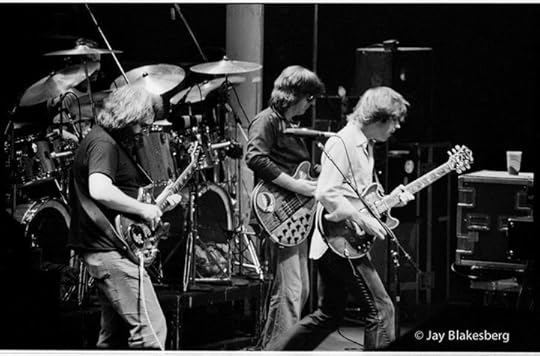
MSG, 1979 Photo by Jay Blakesberg
In a 1978 interview with writer Blair Jackson, Garcia again spoke about the band’s drug use during the making of Aoxomoxoa. Trying to explain one of the album’s craziest tracks, he said, “If you want to make ‘What’s Become of the Baby’ work, I’ll tell you what to do: get a tank of nitrous oxide. All of a sudden it works! When we were doing our mixes on that we had a tank. We were all there with hoses. All kinds of weird shit was happening, it was totally mad, total lunacy.
“I like that record, personally, just for its weirdness. There’s a certain feeling and a certain type of looseness that I kinda dig. That was one my pet records ‘cause it was the first stuff that I thought was starting to sound like how I wanted to hear songs sound. And the studio [experimentation] was successful.”
Despite Garcia’s optimism, even the most hardcore Deadheads do not consider the album a catalog highlight. It is significant for several reasons, however. Most notably it marked the first album consisting entirely of songs co-written with lyricist Robert Hunter. However, his songs had not yet matured into painting vivid pictures of a slightly surrealistic Western landscape. In fact, the songs on Aoxomoxoa are as spaced out lyrically as they are sonically.
// ]]>Amazon.com Widgets
“Hunter and I were both being more or less obscure,” Garcia explained to Rolling Stone. “There are lots of levels on the verbal plane in terms of the lyrics being very far out. Too far out, really, for most people.”
Too far out even for some of Garcia’s bandmates, evidently. “A lot of that record is gratuitous and complex for the sake of being complex,” guitarist Bob Weir told Melody Maker in 1974. “It was over-produced and over-arranged.”
The band spent almost eight months in the studio working on the album, which didn’t sell very well, leaving them in debt to Warner Bros to the tune of $180,000. Meanwhile, while they were struggling to capture their psychedelic visions and create elaborate sonic journeys on studio tape, on stage the Dead were doing so with ever-greater ease and frequency. A key advancement was their new practice of stringing songs together into one continuously moving, evolving whole, linked by shifting rhythmic passages. It would remain a trademark throughout their career, but the technique was just being perfected in ’69.
Armed with a new 16-track recorder (one of the first made by Ampex), the band began recording shows, capturing this new approach in all its glory. The result was Live Dead, unquestionably one of their recorded highlights. The double album audaciously began with a side-long track, the 23-minute “Dark Star,” an exploratory, ever-shifting sonicscape in itself. Side three was devoted to an extended workout of “Turn On Your Lovelight,” arguably the recorded highlight of Pigpen McKernan’s tenure with the band.
“We only recorded a few gigs to get that album,” Garcia recalled. “We were after a certain sequence of the music. It’s our music at one of its really good moments.”
Also notable on the album 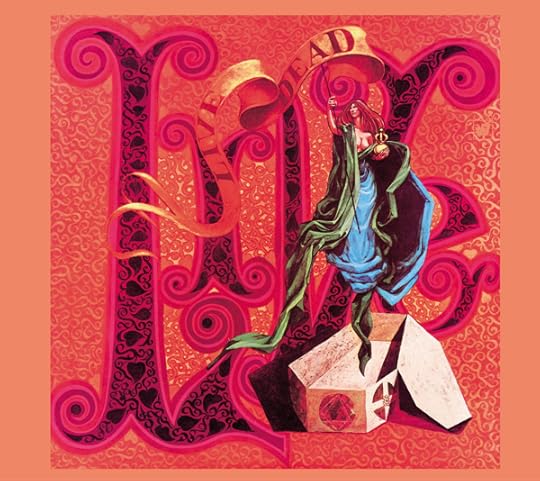 is Weir’s emergence as a musical presence. For the first time, his distinct rhythm playing makes itself known, as he plays bizarre chordal counterpoints to Garcia’s leads and Lesh’s basslines, as well as odd fills and quirky motifs.
is Weir’s emergence as a musical presence. For the first time, his distinct rhythm playing makes itself known, as he plays bizarre chordal counterpoints to Garcia’s leads and Lesh’s basslines, as well as odd fills and quirky motifs.
“He’s an extraordinarily original player in a world full of people who sound like each other,” Garcia said of Weir in a 1982 with The Record. “I don’t know anyone else who plays guitar the way he does, with the kind of approach he has to it. That in itself is, I think, really a score, considering how derivative almost all electric guitar playing is.”
Another strength of Live Dead is the way it captures the band playing through complicated passages, most notably on “Dark Star” and “The Eleven” (so named for its odd 11/4 time signature) with ease and loose-limbed precision. It was, contrary to popular opinion, the product of many hours of rehearsal time, according to Garcia.
“You can’t play confidently and fluidly in those [odd time signatures] without really knowing what you’re doing… without working at it,” he said in The Record. “It’s not something that just happened to us. There was a long, slow process that really brought that into being.”
It was a process, which reached its fruition on Live Dead, the ultimate chronicle of the early-era Grateful Dead.
// ]]>Amazon.com Widgets
March 25, 2015
Stevie and Buddy jam, 1989
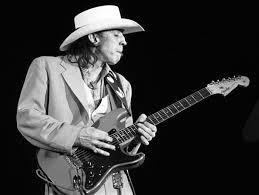
Foto by Kirk West
Yep. More rare video of the late, great Stevie Ray Vaughan has suddenly appeared on YouTube: Buddy Guy jamming with Stevie on July 30, 1989, at Buddy Guy’s Legends in Chicago.
This was Guy’s 53rd birthday party.
Have fun kids.
// ]]>Amazon.com Widgets
March 20, 2015
Allman Brothers at the Fillmore East, 3-13-71
Well, this is pretty cool. I’m not sure of the origin of the video, but it’s been around a bit, originally with no audio. Serious Allman Brothers fan (and excellent British guitarist) Jules Fothergill was able to decipher what was being played and sync the audio. I think it adds up to a pretty great find. March 13, 1971 was, of course, one of the nights recorded for the mighty At Fillmore East.
// ]]>Amazon.com Widgets
March 18, 2015
Jimmy Herring takes one of Jerry Garcia’s guitars for a spin.
Check this out: Jimmy Herring played Jerry Garcia’s Travis Bean TB500 guitar that was sold for almost $250K in a 2013 auction. Garcia played the guitar extensively in the mid 70’s. the following video and picture were posted on the instagram accounts of Widespread Panic and Dave Schools, respectively.
A video posted by Widespread Panic (@widespreadpanichq) on Mar 15, 2015 at 4:05pm PDT
A photo posted by Dave Schools (@dashole) on Mar 15, 2015 at 3:00pm PDT
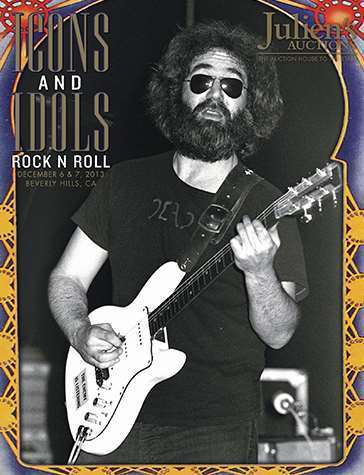
// ]]>Amazon.com Widgets
March 15, 2015
Weir and Garcia on Letterman
Jerry Garcia and Bob Weir on Letterman, 4-13-82. Cool stuff. Includes performances of “Deep Ellum Blues” and “Monkey and the Engineer.” Jerry and Bob both display pretty crackin’ senses of humor.
“I’d like to apologize for having no memory.”
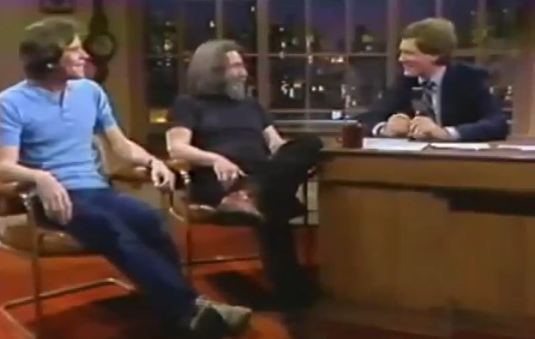
// ]]>Amazon.com Widgets
February 27, 2015
Win this photo!
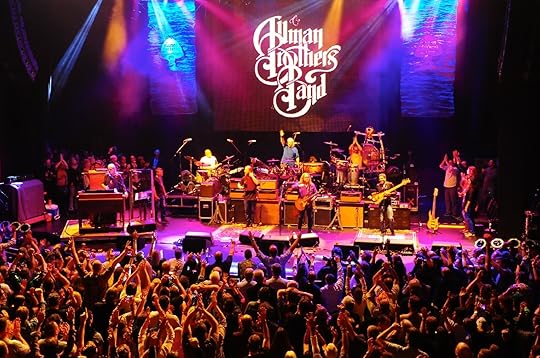
The Final Note -10/28/14. Foto by Kirk West.
Less than 24 hours left to enter to win an 8 x 10 copy of the final image in the One Way Out paperback!
Kirk West captured this shot just after the final note of the Allman Brothers Band career, Beacon Theatre, 10-28-14.
Prize is an 8 x 10 signed by Kirk.
Buy the book now! And don’t forget to visit Les Brers – Kirk West’s Photographic Journey with The Brothers - which will have hundreds more pictures like this.
The Trail He Blazed: RIP Earl Lloyd
Original Old School: The Trail He Blazed
I was very sad to hear about the death of Earl Lloyd yesterday. He broke the NBA’s color barrier over 60 years ago. I spoke to him years ago, for SLAM Issue 94. He came into the league in 1950, with Nat “Sweetwater” Clifton and Chuck Cooper. I went to high school with Chuck’s kids – all great people. Now all three pioneers are gone. Rest in peace.
Please take a few moments to read the thoughts of this bright, thoughtful man who left the world a better place than he found, a goal to which we can all aspire.
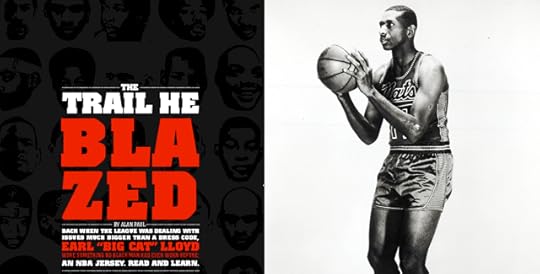
“You can’t compare what Jackie did to what I did!” says the 77-year-old Earl Lloyd, his deep, gravelly voice booming with emotion over the phone from his Tennessee home. “Jackie is my hero, and his path was so much rougher than mine that any comparisons are trite.”
But facts are facts. And the fact is, Lloyd broke the NBA’s color barrier when he took the floor for the Washington Capitals on October 31, 1950 against the Rochester Royals. One key difference between desegregation in basketball and baseball was that Lloyd had two fellow pioneers; the Celtics’ Chuck Cooper and the Knicks’ Nat “Sweetwater” Clifton, both of whom also joined the League in 1950. Lloyd is the last survivor of the trio; Cooper died in 1984, while Clifton passed in ’90.
Lloyd, nicknamed “The Big Cat,” was picked by the Caps in the ninth round after a terrific career at West Virginia State. He played just seven games in Washington before being drafted again-into the Army. The Caps folded, but after a year in the service, Lloyd joined the Syracuse Nationals. In six seasons there, the 6-6, 220-pound forward set picks, grabbed boards and played tough D, and he averaged 10.2 ppg and 7.7 rpg in ’54-55 when he and teammate Jim Tucker became the first African-American players to win an NBA title. In ’58, he was traded to Detroit, where he played two more seasons. In ’68, he became the first African-American assistant coach with the Pistons, and he blazed more trails when he took over as Pistons’ head coach in 1970. After 40-plus years in Motown, Lloyd and his wife retired to Tennessee a couple of years ago. He was elected to the Hall of Fame as a contributor in 2003.
SLAM: Jackie Robinson was chosen specifically to break the color barrier. Were you three as well?
EL: I really have no idea-and I had no idea I was going to be drafted. In those days, if a team wanted to know something about a player they called the coach, and that was that. Looking back, the only indication that my coach may have known something is that at the end of the season, my teammate Bob Wilson and I were invited to travel with the Globetrotters for a week, but our coach was quite emphatic about not signing anything. I just accepted that without wondering why. I come from a time and place where people had welfare at heart, so that wasn’t hard to do.
Given the racial climate in Washington in 1950, I have a hard time believing the Capitals would have selected me if the Celtics had not drafted Chuck Cooper. Clearly, they were in no hurry to get to me. There’s nothing scientific about taking a guy in the ninth round; it’s a dartboard. I can’t think of another ninth-round pick in NBA history who made the team.
SLAM: Given that and your situation, did you think you had a chance when camp started?
EL: Not really. Playing in a real competitive conference [the then-mighty CIAA] gave me some confidence. In ’46, when I started college, most of the black talent found its way to my conference because the white schools were largely not available, and the few that were were only interested in the best players. I knew I could play, but I doubted myself when I arrived at camp. Of course I did. How can you not when you’ve been treated as inferior all your life? Most of the people who touched me during my formative years assured me about my worth. That’s nice, but then you get on the bus and see the sign, “For Coloreds,” and you keep walking to the back.
When I got to training camp, I saw guys I had read about, like Bill Sharman from UCLA and Dick Schnittker, the Player of the Year from Ohio State, and wondered if I belonged. Then your competitive juices kick in, and after three or four days, you realize that you do belong-and that is a very defining moment for a young black kid from a Southern state, whose supposed inferiority has been branded into his head since he was born. Everyone else is white and from bigger, more glamorous places, but you realize you can stand your own. Wow! It’s a new world from that day onward. And remember that from kindergarten to college graduation I had never had a white teammate or classmate. This was truly virgin territory for me.
SLAM: Most of the first black players were solid, tough role players rather than stars. Do you think that was intentional?
EL: The key to getting a job is you have to be good at what they need, and everyone needs rebounders and defenders and team players that are unselfish. There was always the fear that we were not smart enough to handle anything considered a skill position, and it was a long time before we got any shortstops in baseball and black centers, and quarterbacks were unknown until very recently. Of course, those rumors have been dashed on the rocks, but they were certainly alive and well in 1950.
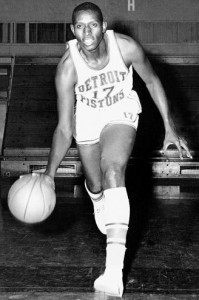 SLAM: Was life on the road difficult?
SLAM: Was life on the road difficult?
EL: Well, it wasn’t a picnic, but the whole thing was a lot harder on Chuck Cooper. He was a dynamite guy who grew up in Pittsburgh and had never been denied access to a hotel or a dining room. This was nothing shocking to me – the folks in Virginia made my transition an awful lot easier. [Laughs] They got me ready to be called names and denied things, and they made the hecklers in NBA arenas look like amateurs. Those people in Virginia were very good at treating folks as less than human. The whole thing was less of an issue for Sweets, because he had toured the world with the ‘Trotters and nothing was going to surprise him. Plus, he was playing in New York, with everything you can think of at his fingertips.
SLAM: St. Louis is usually acknowledged as the worst city for black players at the time. Was that your experience?
EL: St. Louis was tough, but Indianapolis was the worst. In ’55, when we played the Fort Wayne Pistons for the championship, the American Bowling Congress booked their building, so they moved to Indianapolis. Those people were tough, man. Killers. But I realized that they only hurled vile names at you when you played well, and I worked through it by telling myself if I didn’t hear any names, I wasn’t playing hard enough.
SLAM: Why do you think Jackie Robinson had it so much worse than you?
EL: So many reasons! First of all, the public generally didn’t care about basketball, while baseball was the grand old game and he was considered an invader, a threat. I was lucky that we were under the radar and lucky that my first game was in Rochester, where high school teams had been integrated. No one thought twice about seeing black and white players together. I checked into the game and that was that. Most importantly, my teammates largely embraced me and other players ignored me at worst. They were trying to maim Jackie. Any black kid who needs inspiration should look up Jackie Robinson in the encyclopedia.
SLAM: So your teammates and coaches fully accepted you from the start?
EL: I can truthfully say this-in all my years in the NBA I never had a blatant racist comment directed at me by another player. Of course, there were some who would have preferred to not play against a black man, but they just played. That’s why I say it is a disservice to Jackie Robinson to compare me to him. I was lucky to end up in Syracuse, where I was welcomed and where I had great teammates. If you polled that team and asked who their favorite teammate was, half of them might say me. I really think they appreciated how I went about my business.
The stars were Dolph Schayes and Johnny “Red” Kerr, and they were both great guys. I have as much respect for Dolph on and off the court as anyone. To really appreciate him, you had to see him every day, because he was relentless. His work ethic had no peer. He was not fleet of foot or a great leaper, and he compensated by never, ever stopping or pulling back off the throttle. The guy that guarded him caught hold of hell.
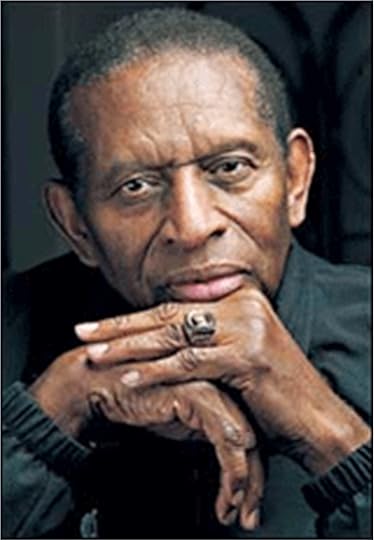 SLAM: There was an unspoken quota of black players for years. At what point did race cease to be an issue in terms of making a roster?
SLAM: There was an unspoken quota of black players for years. At what point did race cease to be an issue in terms of making a roster?
EL: Even when there was a known quota, no one talked about it. No one ever said, “We can’t have but two blacks.” Who admits they’re racist? It was like a secret society, and it was understood. What really changed the landscape was the advent of the Players Association. Suddenly there was an organized manner to speak up against unfairness. I always laugh when people asked me if playing in the NBA was a goal of mine. How the hell you gonna plan a career where there’s no predecessor?
SLAM: You have participated in NBA rookie transitional programs. Do the players treat you with proper respect once they know who you are?
EL: Very much so. You should see the moment they find out who I am. They see this tall old black dude and figured you played, but then they introduce you and their eyes get wide. Then I got ‘em and I just let them know: I don’t want a thing from you, I want something for you-the very, very best. One kid said, “Mr. Lloyd, we owe you big time.” I said, “No one owes me anything. You owe the people coming up behind you to leave this thing a little better than you got it.”
It’s obvious that guys like Chuck and myself, we left it a better place.
Layla vocals and lead guitar only – Wow
I just came across the video below, which includes the audo of Layla, stripped down to lead guitar and vocals. Or so it says; certain lead tracks are definitely not there. You will hear what’s missing. But it is a fascinating and sometimes eerie listen. Check out what happens at around the 2:00 mark, with Duane’s slide and Clapton’s moaning. That’s the essence of the song.
For the full story on the maing of Layla, direct from the mouth of producer Tom Dowd, click here.
February 23, 2015
TTB + Sharon Jones and the Dap-Kings To Tour this summer

Derek with Duane’s goldtop. Photo by Derek McCabe
The Tedeschi Trucks Band is joining forces with modern soul legends Sharon Jones and the Dap-Kings and acclaimed guitarist and longtime TTB friend and collaborator Doyle Bramhall II for a summer tour. The Wheels of Soul 2015 tour starts rolling on June 5th in Paso Robles, CA – one of four nights in the Golden State that kick off a run of west/midwest dates. A second leg will launch in mid-July with stops at venues east of the Mississipi – these dates have yet to announce, so stay tuned!
The band running fan pre-sales for each date through the TTB Tour Page – just click the “Tickets” button on the tour page to get yours with no special codes needed. Here’s a full list of dates with pre-sale date and times listed in parentheses (all pre-sales begin at 10am local time):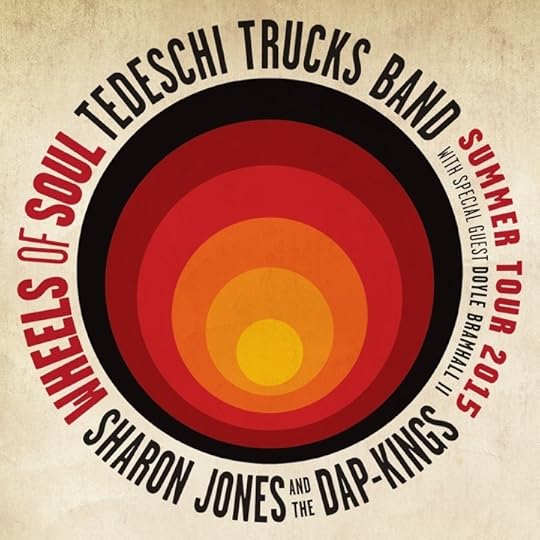
6/5 – Paso Robles, CA - Vina Robles Amphitheatre (Pre-sale begins 2/24)
6/6 – Berkeley, CA – Greek Theatre (Pre-sale begins 3/3)
6/7 – Santa Barbara, CA – Santa Barbara Bowl (Pre-sale begins 2/24)
6/10 – Los Angeles, CA – Greek Theatre (Pre-sale TBA)
6/13 – Morrison, CO – Red Rocks Amphitheatre (On sale now)
6/19 – Somerset, WI – Somerset Amphitheater (Pre-sale begins 2/24)
6/21 – Highland Park, IL – Ravinia Festival (Pre-sale TBA)
6/23 – Rochester, MI – Meadow Brook (Pre-sale begins 2/24)
6/25 – Rochester, NY – Rochester Int’l Jazz Festival (Pre-sale begins 2/24)
6/26 – Cincinnati, OH – PNC Pavilion (Pre-sale begins 3/3)
6/27 – Huber Heights, OH – Music Center at The Heights (Pre-sale begins 3/3)



